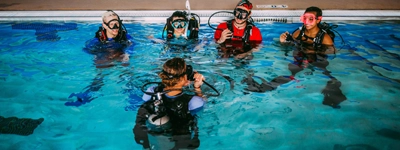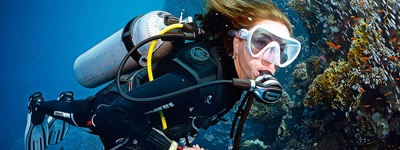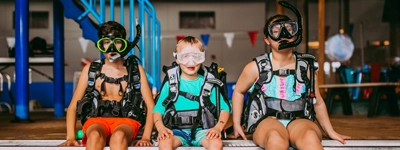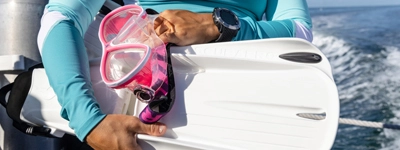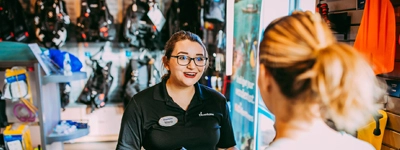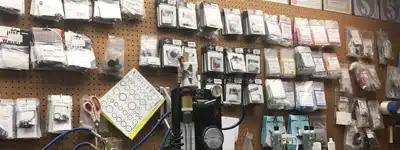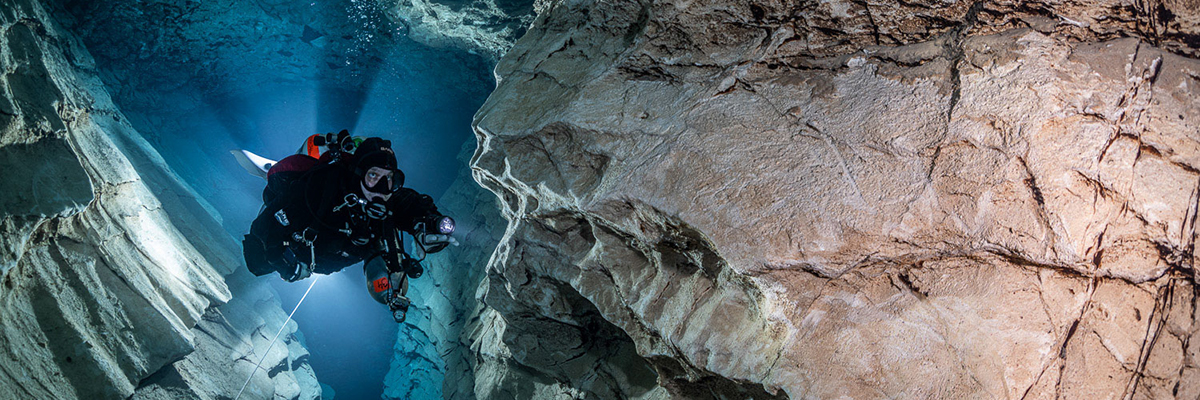
With colder weather on the horizon, it’s the perfect time to explore the world of drysuit diving. Drysuits are a game-changer for extending your dive season and exploring new sites. Dive expert CJ Apel provides the lowdown on everything you need to know to get started with drysuit diving.
What inspired you to become a drysuit diver?
Since I live in the Upper North East (Michgan) it’s not the warmest of waters. One of my diving passions is wreck diving. Having the Great Lakes in my backyard means I have access thousands of beautiful, well-preserved wrecks. Most of them are in the deeper water where the temperatures range in the high 30s to mid 40s. If we get lucky, we might see temps in the 50s. I know many divers who do this in wetsuits but I’m not one of them. I want to be as warm as I can, so drysuit is the way to go.
What training prepared you for it?
I took the SSI Drysuit Class many years ago with instructor Rick Kruzel. Rick taught me how to safely dive a drysuit and gave me the foundation I still use when I teach drysuit diving to my students today.
From there I just kept diving with my drysuits until it became second nature.
What was the process like finding your perfect drysuit?
Well, I’m on my 3rd drysuit now! My first drysuit was used and bright yellow. Even in low vis you could always find me. My second was a Mobby’s drysuit. I’m now diving a DUI FLX Extreme with zip seals for the neck and wrist. I added the KUBI dry glove system with a couple of different gloves for diving warmer or colder waters. I also use a 5mm or 7mm drysuit hood.
Then comes the undergarments. This was one of the hardest choices for me. There are so many different kinds, but I landed on the BARE Polar Stretch top and bottom. They are very comfortable and very warm. I’m still working on an undergarment for waters that are warmer, since it’s easy to get too warm when diving above the thermocline.
In a nutshell it takes time and a little research to find the perfect drysuit. And one more thing to remember: Just because they call it a drysuit does not mean you will always be dry when you get out of the water. You will have a leak, you will flood, it’s all part of the process and experience.
Where do you enjoy diving in your drysuit the most?
That’s easy, everywhere that’s not 75 degrees or warmer! I almost always dive dry, even when teaching open water training dives. Being the instructor, I’m usually in the water the most, and I hate being cold. But I’ll even dive dry on pleasure dives with friends. These dives may last 45 to 60 minutes and I’m fine dipping below the thermocline for most of the dive.
What tips would you give to someone considering or investing in a drysuit?
Drysuit diving is just that–an investment in your comfort while diving. I recommend looking for a seminar or special event at your local dive store that’s all about drysuits. Many equipment manufacturers help put these on so you can get first-hand information and narrow down the selection.
Do your research, ask those who are diving dry what they like and dislike about their suit. Then make sure you sign up for a drysuit class and learn how to use your suit safely and confidently.
Ready to take the plunge into drysuit diving? The right training and gear will keep you warmer and more comfortable on your cold water adventures.
The starting cost for a good quality drysuit is around $1,600, and high-end suits can exceed $3,500. Stop by your local Diventures to talk with our team, explore the options, and see if an investment in drysuit diving is right for you.

